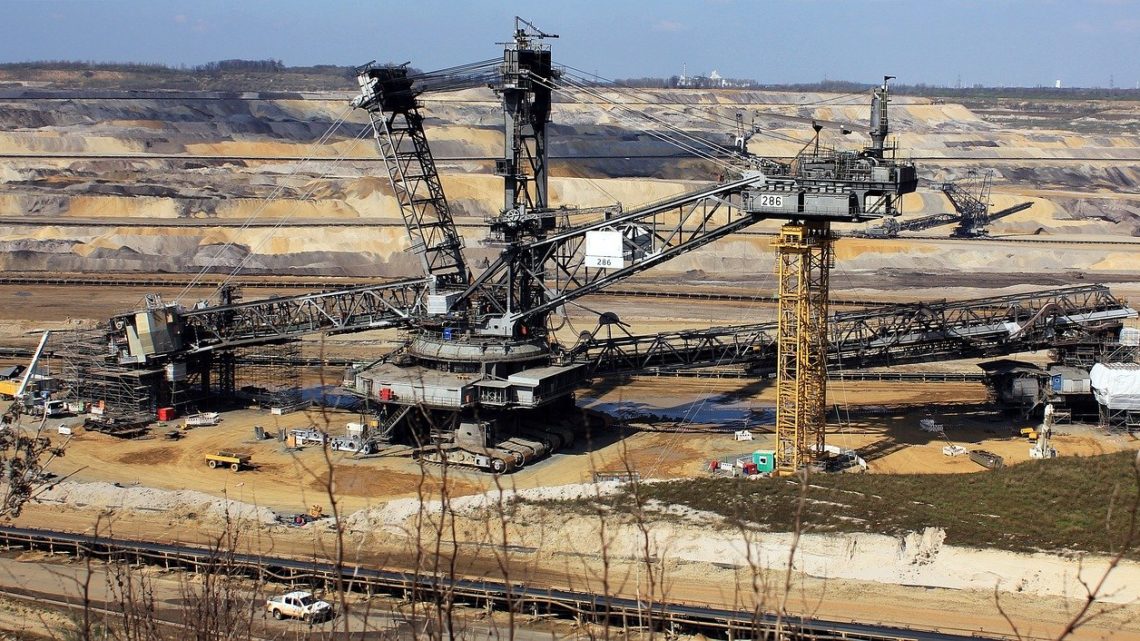
Coal production and exports in the world
What about coal now that we absolutely need to decarbonize our electricity production ? What are the current trends for production and consumption in the various regions of the globe ? Let us review the major producing countries and their assoacited exports.
Production statistics
Coal production has kept increasing on a long term trend –there has been a small slump between 2013 and 2016 though– as can be seen on the following graphs with the major extracting countries. China is largely the first one with nearly half of the total world production.

We also note that the growth is tremendous for China and Indonesia, with the latter soon reaching the second place if its growing trend is sustained in the near future.
Coal is an energy which travels with more difficulties over great distances. On the next figure, we report the percentage of coal, gas and oil that cross a border between production and consumption.
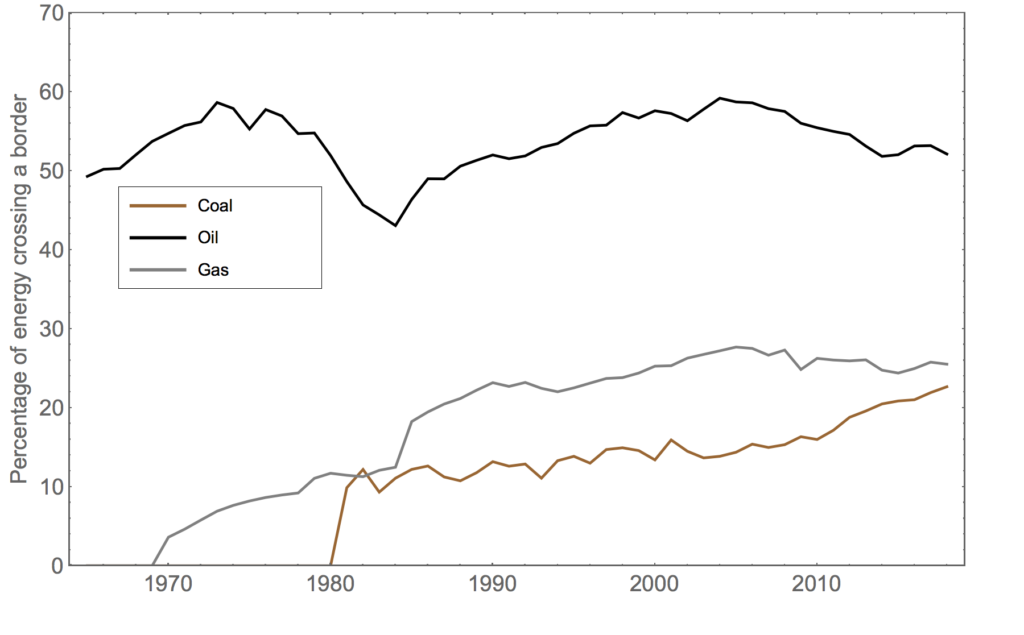
After a stagnation around 15%, the fraction of coal exports has now reached 22%, which is now very close to the fraction of gas exports (25% in slow decline).
This is well below oil whose exports reach 52%. As a remark, let us note that this fraction of exported oil has kept decreasing since the peak of conventional oil around 2006, where a maximum of 59% for oil exports was reached. The producing countries are first serving their economies, hence there is an eviction in energy supply for importing countries. The same comment applies to natural gas whose fraction exported has kept decreasing since 2006. Producing countries keep their handy fossil fuels (first oil, then natural gas), and export what is less convenient (coal is essentially used to generate electricity, but also for metallurgy).
Let us also look at the percentage of coal exports among the main coal producers.
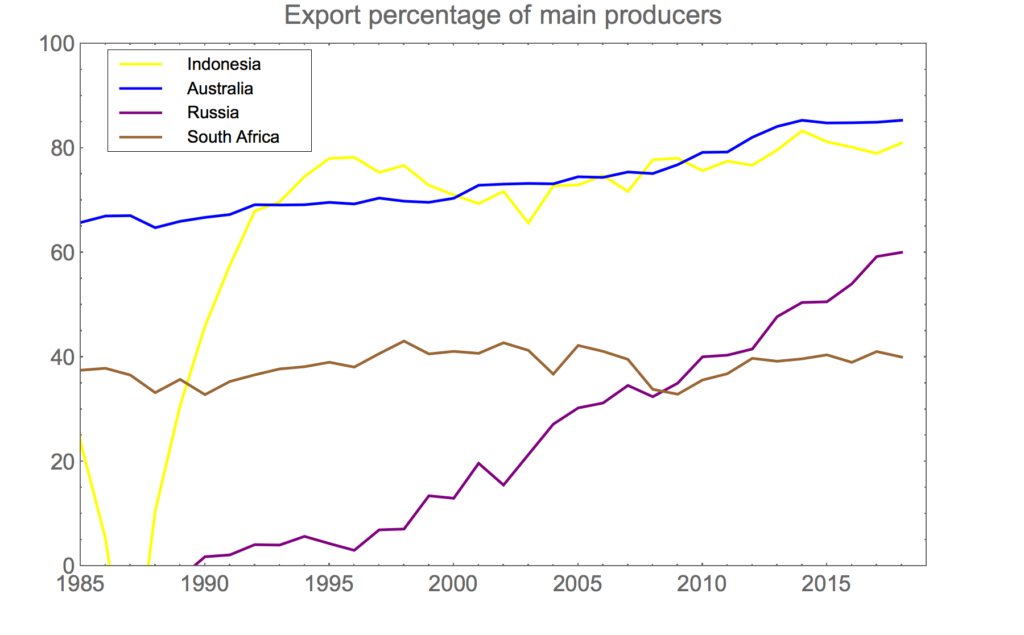
There are very few countries exporting a sizeable share of their production. These are mainly Indonesia, Australia, Russia, and South Africa, but only the first three countries have production volumes which matter on the global coal markets.
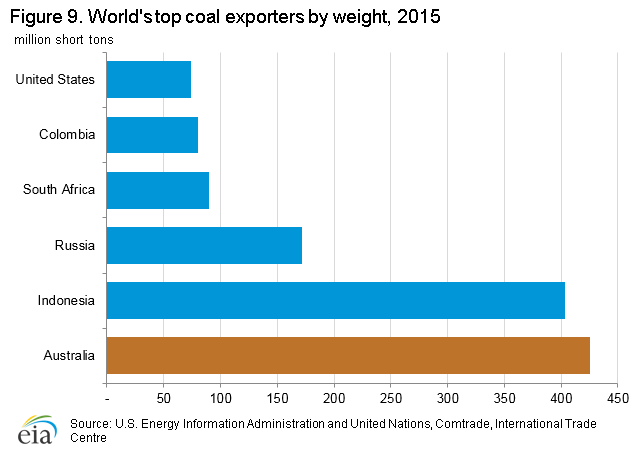
We remark that Colombia is just behind South Africa for coal exports, even though its production is only of the order of one percent of the world total production, because it exports 90% of its production.
Hence, we have essentially three countries which make the world coal market, that is which control the conditions imposed on coal importers. It is thus interesting to know the destinations of these coal exports.
Coal export destinations
Indonesia
Indonesia exports to India (33%), China (27%), South Korea (9%), and Japan (9%) (source S&P Global Platts and EIA). Hence it is fair to say that these exports are exclusively toward Asia, that is they remain regional.

Australia
Australia coal exports go to Japan (31%), China (24%), South Korea (14%), India (12%), and Taiwan (8%), that is nearly exclusively to Asia. These numbers are a bit old and the respectives shares of exports among Asian countries might have evolved.
Russia
Its coal export destinations are very diverse, since they range from Asia to Europe (quite logically since the country is between these two continents). We find South Korea (13%), China (10%), Japan (6%), Ukraine (5%), Germany (10%), Poland (4%), Netherlands (7%), Turkey (7%), Taiwan (4%), and United Kingdom (3%) (source Statista and EIA).

South Africa
South Africa exports two thirds of its production toward Asia, with half of its production for India only, and a non negligible part for African countries.

Colombia
Colombia exports essentielly toward Europe and South America. However the volumes are rathe small even though this country exports nearly all of its production.
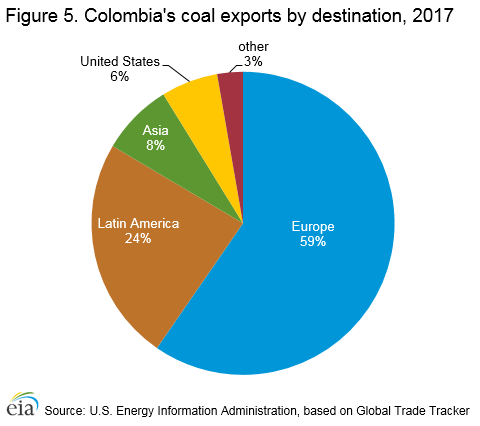
Given that the major exporters, which are Australia and Indonesia, mainly export to Asia, importations of coal in Europe –which are on a slow decline– come from Russia (41%), United States (18%) and Colombia (17%) for the main contributions.
In 1986, Europe was producing 90% of its coal consumption. Nowadays, it is only 55%, even though the coal consumption has been halved since that epoch. Note that half of the current consumption in Europe is in Germany and Poland, mainly for electricity production.
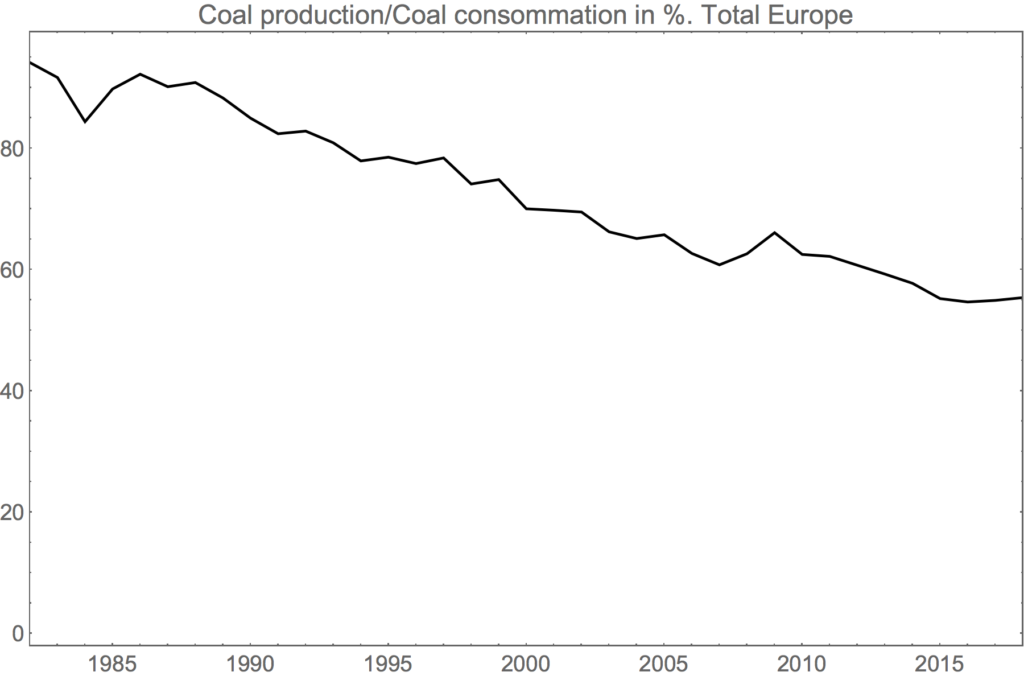
Europe relies heavily on coal imports from Russia (in addition to needing Russian gas) in spite of the decline of this type of fossil fuel in the energy mix.
If you liked this post, do not hesitate to share it with the buttons below. If you would like to receive notifications for new posts, you can sign up with your mail address on the top of the right column.
Thanks !
Image by S. Hermann & F. Richter from Pixabay.
very interesting info ! .